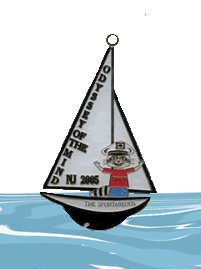Shimla is the capital of Himachal Pradesh. It is also a beautiful tourist place. Shimla is often referred to as the "Queen of Hills,". The city is named after the goddess Shyamala Devi, an incarnation of the Hindu Goddess Kali. At that time, Shimla was known for the temple of Hindu Goddess Shyamala Devi, and not as a city as it is today. During the 'Hot Weather', Simla was also the Headquarters of the Commander-in-Chief of the Indian Army and many Departments of the Government, as well as being the summer capital of the regional Government of the Punjab. There are many tourist places in district Shimla. Some of them are Kufri, travel in Kalka-Shimla train etc. The people of Shimla are informally called Shimlaites. With largely cosmopolitan crowds, a variety of festivals are celebrated here. The Shimla Summer Festival, held every year during peak tourist season, and lasting 3–4 days, is celebrated on the ridge.
Kufri
Kufri is a tiny hill station in Shimla district of Himachal Pradesh state in India. It is located 13 km from the state capital Shimla. The name Kufri is derived from the work "Kufr" meaning a lake in the local language. The highest point in the surrounding region, Kufri has a Himalayan Wild Life Zoo which hosts rare Antelopes, Felines and Birds including Himalayan Monal, the state bird of Himachal Pradesh. During winter a meandering path through the potato plantations turns into a popular Ski track. Kufri is located at 31.10°N 77.25°E.[1] It has an average elevation of 2,743 metres. There are several places in Kufri to see. they are Mahasu Peak, Chini Bunglow, Indira Tourist Park etc.
Kalka-Shimla Toy-Train
THE Kalka-Shimla rail route, which has completed 100 years offers the charm of old-world travel amidst lofty pines and lush green, misty mountains. This is one of the four narrow gauge rail routes on hill terrain in the country, the other three being the Darjeeling , Ooty and Pathankot - Jogindernagar routes. In fact, the Darjeeling route was used as a model for the Kalka-Shimla route, which was proposed in 1891. Started during the reign of Lord Curzon in November 1903, this rail route features in the Guinness Book of World Records for offering the steepest rise in altitude in the space of 96 kilometers. More than two-thirds of the track is curved, sometimes at angles as sharp as 48 degrees. Laid out on a 96 km long narrow gauge track that passes through 103 tunnels and across more than 800 bridges and viaducts, it is one of the most beautiful hill railways in India. It was considered the "crown jewel" of the Indian National Railways during British times. Flanked by hills on both sides, the rail line, like twin threads of silver, clings to the steep cliffs and ventures boldly over bridges, built over tiny streams that show off their radiance in the sunlight. The cool breeze sweeps across your face as the train makes an arduous climb of almost 4800 feet from Kalka to Shimla in almost five hours.
The rail journey
The rail line begins its climb almost immediately after its departure from the Kalka railway station. The toy train chugs along the line, whistling through the deodar, pine, ficus, oak and maple woods at a speed of 22 km an hour. As the journey begins, one is taken in with the change in vegetation, and the majestic glory of the railway stations and Gothic-style bridges en route.
The most refreshing part of the journey is the experience of sitting by the window, breathing in the cool breeze and taking in the greenery, smell of fresh dew on the vegetation, the chirping of birds and the sight of cattle grazing around the track, especially if you are travelling in either of the two early morning toy trains.
Boating










